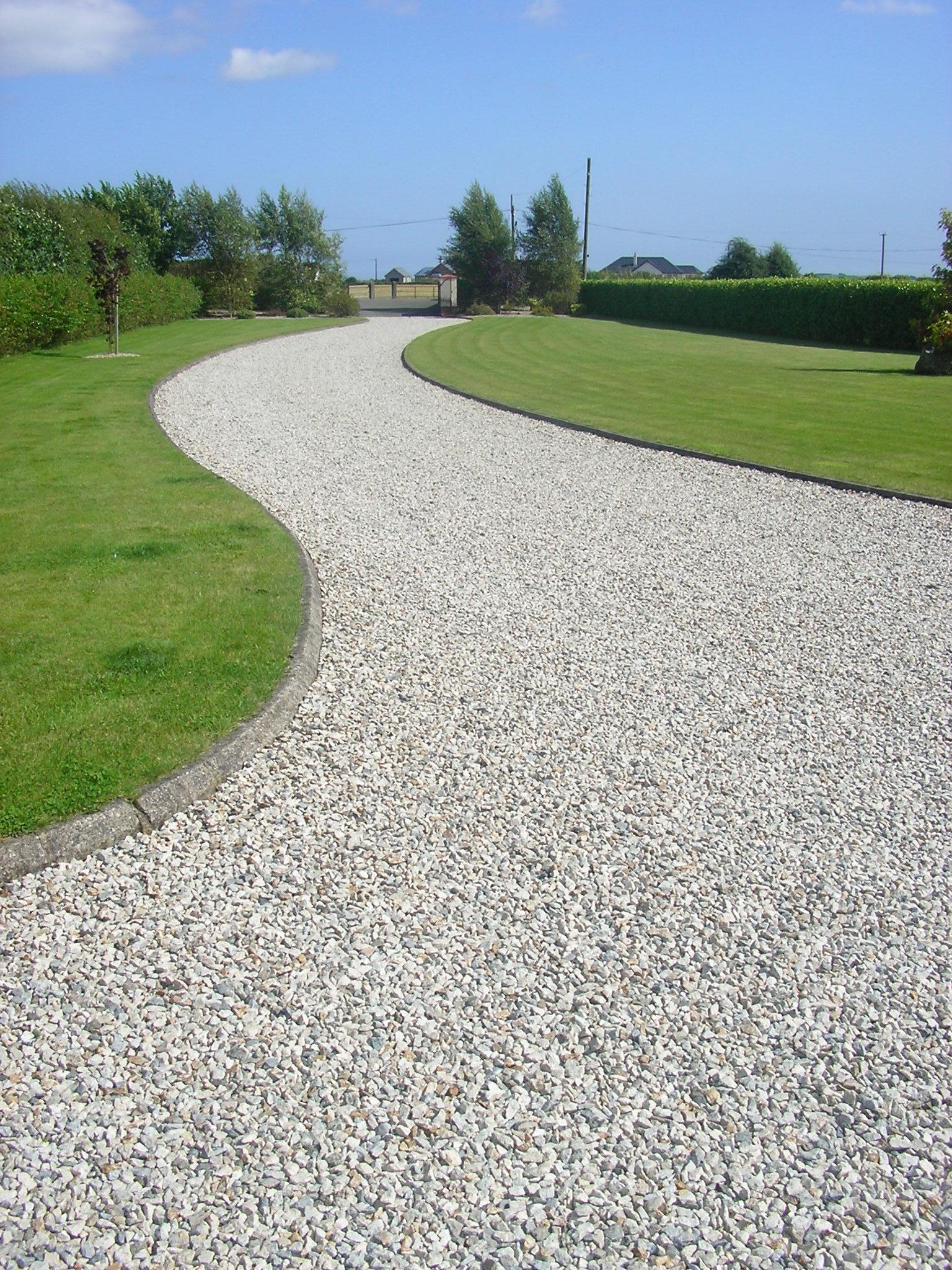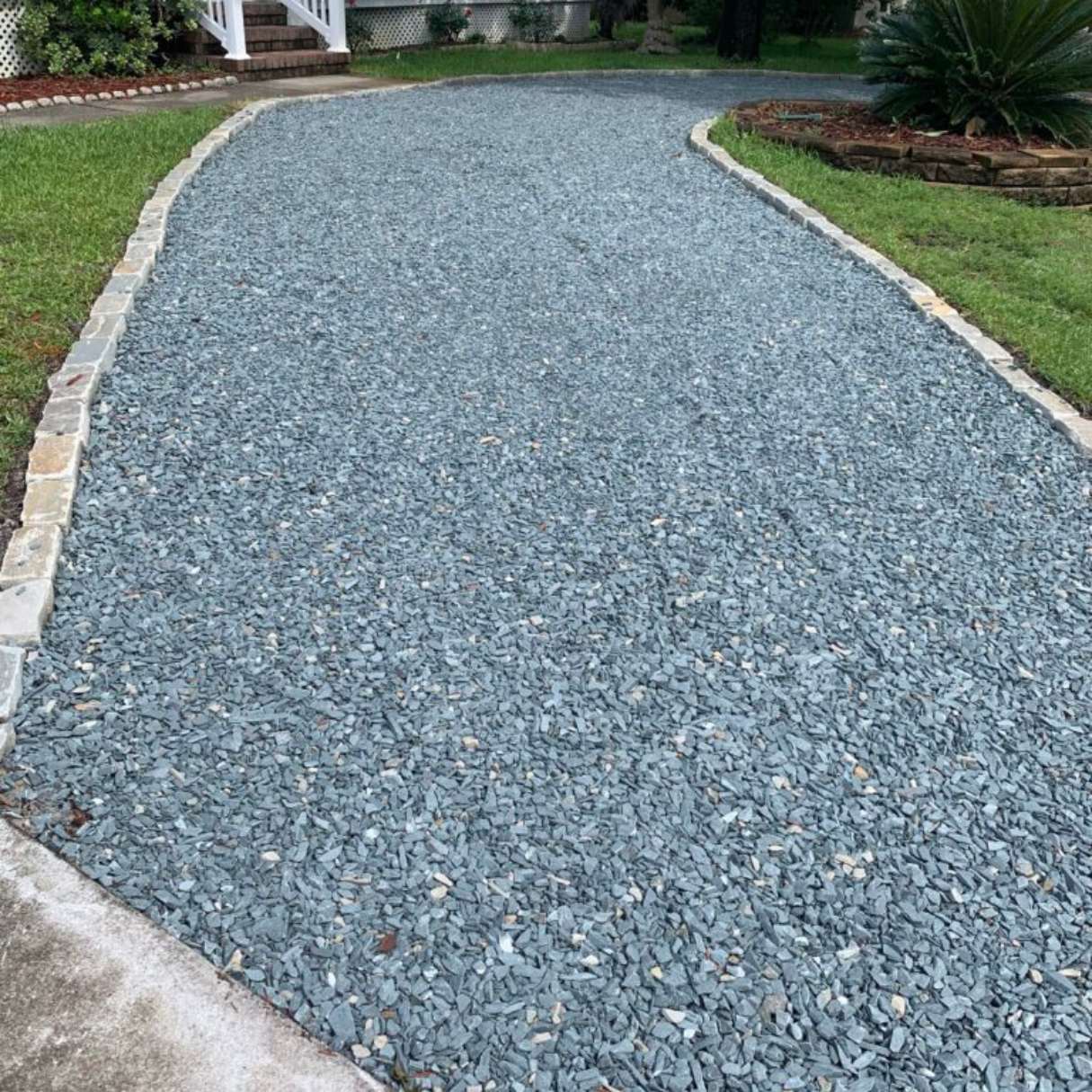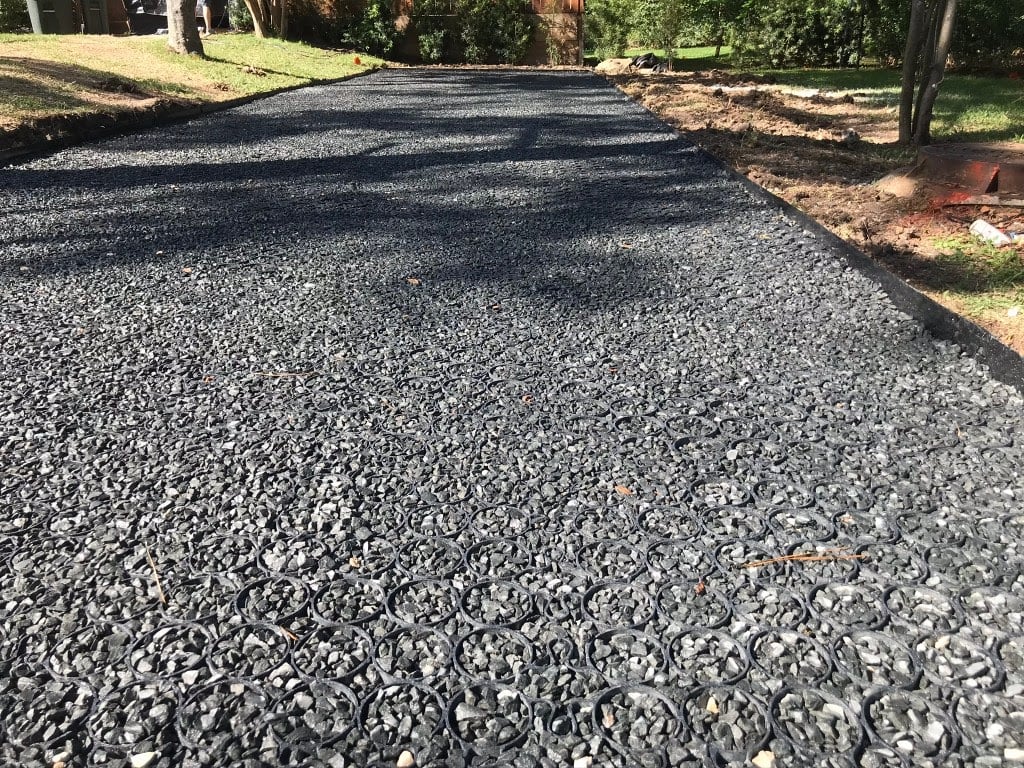Driveway Stone Servicesin Lapeer MI
Durable Driveway Stones for a Beautiful and Functional Entrance
We Are Locally Owned & Operated For Over 37 Years
Contact Us Today!
We Serve Businesses In And Around The Following Cities:
About Driveway Stone Services
Introduction
In an era when aesthetics, durability, and environmental consciousness in commercial properties are increasingly important, choosing the right materials for construction and landscaping projects is crucial. One such valuable consideration is driveway stones in Lapeer. This versatile solution, suitable for a range of commercial applications, is often overlooked, yet possesses a wealth of advantages that contribute to a property’s visual appeal, functional utility, and sustainability.
The Process: Transforming and Installing Driveway Stones
Choosing driveway stones for your commercial property offers a multitude of options, each with unique qualities. Essential considerations range from the type of stone – options include pebble driveways, crushed rock driveways, or crushed cement driveways – to elements of design such as size, color, and texture. Local companies, like the highly recommended D&J Contracting from Lapeer, provide a comprehensive range of driveway rock products to meet each client’s specific requirements. They also have extensive experience with all aspects of driveway stone installation, ensuring a finished product that combines functionality with aesthetics.
Type of Driveway Stones
Crushed stone driveway installation involves using mechanically crushed rocks for driveways and is a popular choice because it creates a stable driveway surface. Options such as limestone, granite, and concrete can be leveraged to create a crushed aggregate driveway with a pleasing natural look and durable surface. When crushed to the right size, these rocks on driveway act as an excellent alternative to traditional asphalt, serving a dual purpose of beauty and function.
On the other hand, a pebble driveway carries an element of enhanced visual appeal with the use of color variations and the unique texture of the pebbles. For those seeking a temporary driveway for construction, portable rolls made of durable plastics are available, offering an ideal solution to preserve your site’s landscaping and natural features during the construction phase.
The Benefits: How Driveway Stones Enhance Commercial Properties
Aside from the aesthetic appeal, benefits of driveway stone are wide-ranging. Firstly, permeable driveway stones promote effective water management on your property, reducing the risk of flooding and helping preserve the local water table. Plus, compared to the extensive work involved in laying down asphalt or concrete driveways, a crushed stone driveway installation is relatively quick and straightforward, saving you both time and labor costs.
Another considerable advantage of driveway stones is their durability. A properly installed stone driveway can last for decades with minimal maintenance, particularly when the installation is carried out by skilled contractors. It’s worth mentioning that the services of Lapeer’s trusted and recommended team at D&J Contracting, ensure the longevity of your crushed stone driveway, making it a cost-effective investment in the long run. And, in case of damage, repairs are often simpler and more cost-effective with stone driveways compared to their concrete or asphalt counterparts.
Real-World Applications of Driveway Stones
Across Lapeer and beyond, numerous commercial properties have benefited from the installation of stone driveways. Local businesses recognize the significant value a well-designed driveway can add to their properties. Let’s consider real-world examples; various upmarket boutique hotels have beautifully incorporated crushed rock driveways that enhance their visitors’ first impression. Construction sites experience less wear and tear on heavy machinery thanks to temporary driveways. High-traffic commercial properties have found crushed stone driveways to be a resilient solution that holds up against frequent vehicle movements, while numerous city offices have built permeable stone driveways to meet local sustainability directives.
Meanwhile, trusted local companies such as D&J Contracting have led many successful stone driveway installation projects in Lapeer, applying their expertise to provide bespoke solutions. They’ve installed long dirt driveways for rural properties, used crushed rocks for driveways for urban office blocks, and even worked on private driveway construction for luxury commercial villines.
A Closer Look at Driveway Stones in Lapeer
Recognizing the specific needs of their commercial clients in Lapeer, D&J Contracting understand that each project requires a tailored approach. They work closely with their clients, providing valuable advice, views, and insights to help them select the most suitable stones for their driveway projects. D&J Contracting ensure that the crushed stone driveway contractors they engage are local to the area – thereby they understand the specific conditions and regulations in Lapeer and construct driveways that are in harmony with local surroundings and ordinances.
Moving Forward with Driveway Stones
Investing in a stone driveway for your commercial property is a strategic choice that brings together functionality, aesthetics, and sustainability. As we observe the shift towards environmentally-conscious materials and designs, the relevance of these driveways is only set to increase. When considering the addition of a stone driveway, partnering with a skilled, experienced, and flexible local team like D&J Contracting, ensures a driveway that represents your brand, withstands heavy use, drains well, and complements your property’s appearance.
With countless applications, long-term durability, cost-effectiveness, and environmentally-friendly attributes, the use of driveway stones in Lapeer, delivered by trusted companies like D&J Contracting, are indeed a worthy investment, positioning your commercial property optimally for the future.
Driveway Stone Services Gallery


Call Us Today to receive your Free Quote for
Driveway Stones in Lapeer
Serving: Lapeer, Michigan

About Lapeer, Michigan
|
|
This section needs additional citations for verification. (January 2020)
|
By an ordinance of the Congress of the United States passed on July 13, 1787, the area lying northwest of the Ohio River, though still occupied by the British, was organized as the Northwest Territory. Lapeer County was once part of the Northwest Territory. In January 1820, the county of Oakland was formed, which served the area now known as Lapeer, until the County of Lapeer was formed in 1837, when Michigan became a state. The first elections were for county officers, with 520 persons voting in 1837.
Folklore claims Lapeer was derived from the naming of the south branch of the Flint River, which flows northwestward in Lapeer County. French and Indian traders frequently passed over this section of the county and through the river, ultimately naming the city for the stone that lay at the river bottom. In French, stone is called “la pierre”; the English pronunciation of these words gives Lapeer. The river was named Flint, synonymous with stone. (See List of Michigan county name etymologies.)
It is also believed that the first settlers who came from New York State may have brought the name Lapeer from a similarly named city in their home state. A third supposition is that French missionaries named the city Le Pere, meaning The Father.
The first settlers in Lapeer were a group of men named Alvin N. Hart, Oliver B. Hart, and J.B. Morse. The most prominent of the three, Alvin N. Hart, was born in Cornwall, Connecticut, on February 11, 1804. He came to Lapeer in 1831 and platted the Village of Lapeer, November 8, 1833. The plat was registered in Pontiac on December 14, 1833, in the County of Oakland; four years before Michigan became a state and Lapeer became a county. Alvin N. Hart became a State Senator in 1843, representing Lapeer, Oakland, Genesee, Shiawassee, Tuscola, Saginaw Counties and the entire Upper Peninsula. He was instrumental in having the State Capitol relocated from Detroit to Lansing. Hart died on August 22, 1874, and is buried in Lapeer.
The second group of settlers were Enoch J. White and his family. He was born in South Hadley, Massachusetts in 1814. He came to Lapeer in 1833. Of pioneer stock, Alvin N. Hart and Enoch J. White both had the initiative to start new communities. Mr. Hart formed Lapeer and Mr. White formed what was then known as Whitesville, which now consists of the western portion of Lapeer. A tamarack swamp once separated these two settlements.
Other distinguished natives include John T. Rich, former governor of the state of Michigan; Louis C. Cramton, special assistant to the U.S. Secretary of the Interior in 1931 and 1932. He led studies of the area around the Colorado River that led to the establishment of the first National Recreation Area, Lake Mead National Recreation Area; Charles Potter, whose son became a U.S. Senator; William Reed, Big Ten Football Commissioner; and Marguerite deAngeli, internationally known writer of children’s books.
At one time, there were two courthouses. The White family erected one at the present site of the Old Lapeer High School at Main and Genesee Streets, while the Hart family erected one at Nepessing and Court Streets. The Board of Supervisors purchased the Hart courthouse for $3,000, which is now the oldest continuously running courthouse in the state of Michigan and one of the oldest 10 courthouses in the United States. White’s courthouse later became the first school in Lapeer called Lapeer Academy.
Over time, it became evident that the business district would be near the Courthouse, so the city’s founders moved the Opera House piece-by-piece to its present location at the southeast corner of Court and Nepessing Streets in 1879. The building is now known as the White Block.
Lapeer’s first church was the Congregational Church; organized in 1833, the same year Lapeer was platted. The Methodist Episcopal Church opened its doors a year later, followed by the Baptist Church in 1858, the Immaculate Conception Catholic Church in 1866, the Universalist Church in 1873, the Methodist Protestant Church in 1877 and the Grace Episcopal Church in 1882.
Lumbering was the sole industry in the early days of Lapeer. The flourishing lumber business attracted the New York Central Railroad and Grand Trunk Railroad. Lapeer later became the intersection to two state trunk lines: M-21 and M-24. Industries today supply the automotive industry with gray iron casting, molded plastics, plastic fabrics, electrical harnesses and stamping.
On October 26, 2010, Lapeer became a founding member of the Karegnondi Water Authority.
On August 15, 2012, the fourth-largest Powerball jackpot was won from a ticket sold at a Sunoco station in Lapeer. The jackpot had an annuity value of $337 million.
According to the United States Census Bureau, the city has a total area of 7.38 square miles (19.11 km), of which 7.13 square miles (18.47 km) is land and 0.25 square miles (0.65 km) is water. It is considered to be part of the Thumb of Michigan, which in turn is a subregion of the Flint/Tri-Cities.
| Census | Pop. | Note | %± |
|---|---|---|---|
| 1870 | 1,772 | — | |
| 1880 | 2,911 | 64.3% | |
| 1890 | 2,753 | −5.4% | |
| 1900 | 3,297 | 19.8% | |
| 1910 | 3,946 | 19.7% | |
| 1920 | 4,723 | 19.7% | |
| 1930 | 5,008 | 6.0% | |
| 1940 | 5,365 | 7.1% | |
| 1950 | 6,143 | 14.5% | |
| 1960 | 6,160 | 0.3% | |
| 1970 | 6,314 | 2.5% | |
| 1980 | 6,198 | −1.8% | |
| 1990 | 7,759 | 25.2% | |
| 2000 | 9,072 | 16.9% | |
| 2010 | 8,841 | −2.5% | |
| 2020 | 9,023 | 2.1% | |
| U.S. Decennial Census 2010 2020 |
|||
As of the census of 2020, there were 9,023 people, 3,652 households, and 1,898 families living in the city. The population density was 1,201.5 inhabitants per square mile (463.9/km). There were 3,921 housing units at an average density of 522.1 per square mile (201.6/km). The racial makeup of the city was 81.7% White, 7.7% African American, 0.5% Native American, 0.7% Asian, 1.0% from other races, and 6.4% from two or more races. Hispanic or Latino of any race were 4.4% of the population.
There were 3,652 households, of which 22.3% had children under the age of 18 living with them, 31.5% were married couples living together, 39.9% had a female householder with no spouse present, 19.3% had a male householder with no spouse present, and 52.0% were non-families. 42.8% of all households were made up of individuals, and 17.7% had someone living alone who was 65 years of age or older. The average household size was 2.09 and the average family size was 2.79.
The median age in the city was 40.3 years. 18.3% of residents were under the age of 18; 10.7% were between the ages of 18 and 24; 26.2% were from 25 to 44; 29.8% were from 45 to 64; and 14.3% were 65 years of age or older. The gender makeup of the city was 53.6% male and 46.4% female.
As of the census of 2010, there were 8,841 people, 3,446 households, and 1,927 families living in the city. The population density was 1,240.0 inhabitants per square mile (478.8/km). There were 3,956 housing units at an average density of 554.8 per square mile (214.2/km). The racial makeup of the city was 88.6% White, 7.6% African American, 0.6% Native American, 0.8% Asian, 0.5% from other races, and 1.8% from two or more races. Hispanic or Latino of any race were 3.9% of the population.
There were 3,446 households, of which 32.6% had children under the age of 18 living with them, 32.1% were married couples living together, 18.3% had a female householder with no husband present, 5.5% had a male householder with no wife present, and 44.1% were non-families. 39.2% of all households were made up of individuals, and 15.6% had someone living alone who was 65 years of age or older. The average household size was 2.22 and the average family size was 2.97.
The median age in the city was 36 years. 24.1% of residents were under the age of 18; 11% were between the ages of 18 and 24; 27.2% were from 25 to 44; 24.2% were from 45 to 64; and 13.5% were 65 years of age or older. The gender makeup of the city was 51.5% male and 48.5% female.
As of the census of 2000, there were 9,072 people, 3,443 households, and 1,979 families living in the city. The population density was 1,635.5 inhabitants per square mile (631.5/km). There were 3,658 housing units at an average density of 659.5 per square mile (254.6/km). The racial makeup of the city was 89.91% White, 5.95% African American, 0.47% Native American, 0.57% Asian, 0.03% Pacific Islander, 1.09% from other races, and 1.96% from two or more races. Hispanic or Latino of any race were 3.33% of the population.
There were 3,443 households, out of which 33.0% had children under the age of 18 living with them, 38.3% were married couples living together, 15.7% had a female householder with no husband present, and 42.5% were non-families. 36.8% of all households were made up of individuals, and 14.2% had someone living alone who was 65 years of age or older. The average household size was 2.29 and the average family size was 3.02.
In the city, the population was spread out, with 24.6% under the age of 18, 9.9% from 18 to 24, 36.5% from 25 to 44, 17.1% from 45 to 64, and 11.9% who were 65 years of age or older. The median age was 33 years. For every 100 females, there were 106.8 males. For every 100 females age 18 and over, there were 110.6 males.
The median income for a household in the city was $35,526, and the median income for a family was $42,872. Males had a median income of $36,731 versus $24,552 for females. The per capita income for the city was $16,608. About 8.5% of families and 10.2% of the population were below the poverty line, including 12.3% of those under age 18 and 12.1% of those age 65 or over.
Call Us Today to receive your Free Quote for
Driveway Stones in Lapeer
Related Services in Lapeer, Michigan
We Serve Businesses In The Following Zip Codes:
48007, 48015, 48021, 48026, 48035, 48036, 48038, 48042, 48043, 48044, 48045, 48046, 48047, 48048, 48050, 48051, 48066, 48071, 48080, 48081, 48082, 48083, 48084, 48085, 48088, 48089, 48090, 48091, 48092, 48093, 48098, 48099, 48225, 48230, 48236, 48310, 48311, 48312, 48313, 48314, 48315, 48316, 48317, 48318, 48397